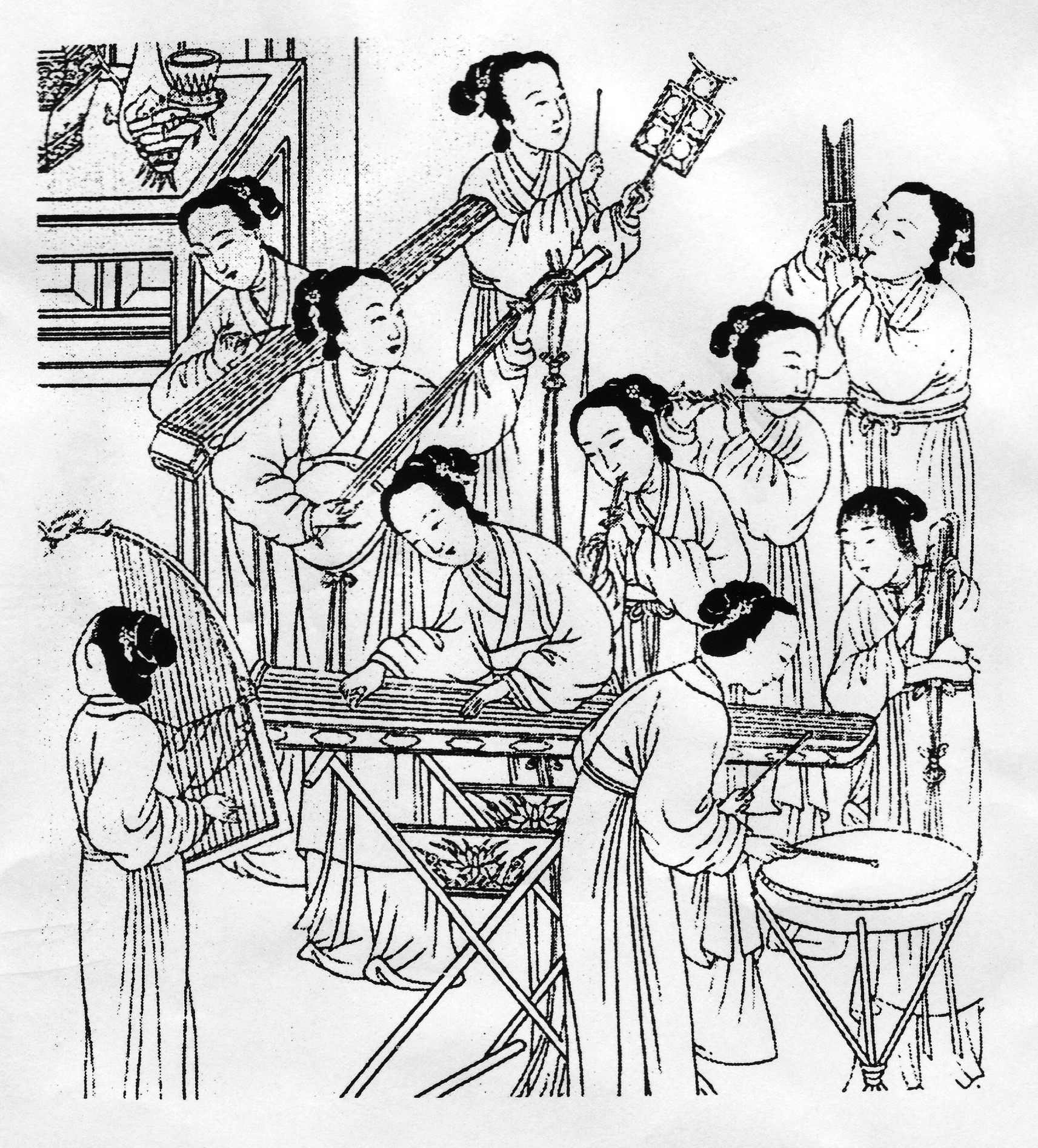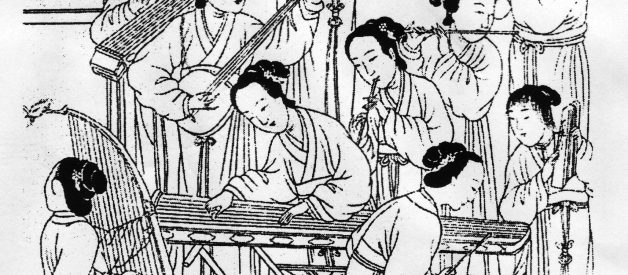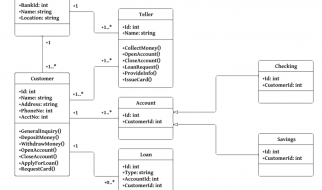
Imagine your favorite piece of traditional Chinese music. Maybe it?s the Hong Kong Chinese Orchestra?s rendition of The Butterfly Lovers. Maybe it?s Wu Man?s ?Dance of the Yi people? for the Pipa. Sadly, this isn?t really traditional Chinese music, but something else entirely.
Rather, what you?re thinking about is called ?Chinese Orchestra?, and it?s a pretty modern invention. To understand this, we must go back to the 1920?s. The Qing Dynasty had fallen, and western influence had finally fully penetrated China. While some musicians and intellectuals promoted western music, some composers wanted to ?improve? traditional Chinese music. They took a basic ensemble known as Jiagnan Sizhu, but added in more instruments and arranged them in sections. They then modified instruments to play in western tunings, and wrote music that was meant to imitate western classical music. Later, the overall timbre of many instruments were modified to appeal more to western tastes, and modern Chinese orchestra was born. It was later promoted by the PRC during the massively damaging Cultural Revolution because it didn?t carry the ?feudal? connotations that authentic Chinese genres, such as Chinese Opera, Taoist music, Confucian music and other forms carried. This is the form of music taught at most Chinese Music conservatories, and even though it was meant to ?improve? traditional Chinese music, in reality, it led to a huge cultural bankruptcy among Chinese people. Other than the instruments used, there really isn?t much that separates it from Western Classical music. In fact, because the timbre of Chinese instruments were modified so heavily, to the untrained ear, Chinese orchestra can sound exactly identical to western classical orchestra. In fact, in the modern day, most Chinese Orchestras supplement their modified Erhus and Pipas with Violins and Cellos, so the overall sound is even more westernized.
Possibly one of the more famous Chinese Orchestra compositions, it?s not exactly a traditional piece of music.
So? what does real traditional Chinese music sound like? Well, today, it?s becoming increasingly hard to find real traditional Chinese music. Because the modern Chinese person is rarely exposed to this type of music, it may come off as ?bad-sounding? and ?simplistic?. One of the main factors in the huge success in Chinese Orchestra is nationalism. Many Chinese people see Chinese Orchestra as big and epic, to fit their proud nation, while real traditional Chinese is ?simplistic? and even ?stupid?, only fit for a small, feudal nation. This pretentious mindset has even penetrated the reconstruction of Tang Dynasty music. Chinese reconstructions of their own music, tend to be inaccurate, because they make the compositions sound like modern Chinese orchestra. Compare that to the Korean and Japanese interpretations of the pieces, which are much closer to how they were originally performed. That being said, what does traditional Chinese music usually sound like? Well, for the most part, it?s heterophonic; the musical structure is based on variations of a single melody. Most Chinese orchestra is polyphonic, meaning that different melodies are used at the same time, as opposed to variations of the same melody. As well, traditional Chinese pieces don?t try too hard to be artistic. Many of the melodies are catchy and even danceable. I can?t for the life of me dance to Chinese Orchestra, or even Classical Music. As well, many of the local folk genres preserve elements of Chinese music that aren?t found in most western music, like microtones. As well, the timbre of the instruments tend to be more ?shrill?, but that?s what people actually liked and listened to back then. Chinese Traditional Music is mainly expressive, it?s meant to express emotion. Whereas Chinese Orchestra is mainly impressive. It?s meant to wow audiences, which is the main issue I have with it. Music should not solely exist just to wow people. Even the shreddiest guitar players like Steve Vai know that music without emotion is empty. The techniques used in Traditional Chinese music are much simpler. You won?t hear those crazy tremolo notes on the Sheng, rather, the Sheng provides a mix of melodic and chordal accompaniment.
So what are some real forms of traditional Chinese music to start out with? First, I?d recommend Chinese Opera, but not just any kind of Chinese Opera. Specifically, I?d recommend Hebei Bangzi style opera. Rather than using the Erhu as the main instrument, it uses the Banhu, which is a much older instrument, directly related to the original Xiqin that all Huqin instruments derive from (which still survives in Korea, where it is called the Haegeum). The music is based off the kind of music popular during the Ming and Qing dynasties in Northern China. Although westernized forms of some of the musical instruments are used, it?s overall an authentic experience.
Excerpt from Su Wu the Shepherd
So what if you wanted the nearest Chinese equivalent to the Western Classics of the 1700?s and 1800?s. Look at Qing Dynasty Royal Court Music. It?s contemporary with the likes of Mozart and Beethoven. It was the main entertainment for the Emperor and his family. After the fall of the Qing Dynasty, the musicians were dismissed and had to return to society, until one of the Sihu (a 4 stringed Huqin, which was originally the most popular instrument before the Erhu) players revived the style. It?s rarely played today, but there are a few videos of it on the youtube channel Dbadagna, who even has videos of his particular ensemble playing the music. Even though the instruments used nowadays are the westernized forms, it?s still closer to tradition, and has a unique sound to it.
A performance of Qing Dynasty music. The one in the blue Tangzhuang playing the Sihu is the one who runs the youtube channel and has amazing videos of various local forms of Chinese music
Ok, so far, all of these use westernized Chinese instruments. Are there any forms that use the original forms? Well, yes, actually. One genre in particular that has been seeing a revival: Nanguan. Also called Nanyin (but not to be confused with Naamyam, a Cantonese form of music related to Nanyin), this genre is mostly played in Fujian and Taiwan and is an important part of Hokkien, Teochew and Hakka culture. Notice the unique Pipa used, which still has just-intonation fretting, and is played held on the side, with the bare fingers. The Pipas with the many frets are a modern thing, and really, on those, only the higher frets are even used. As well, the fancy 5 finger tremolo was invented mostly to wow audiences and really is just a harder way of doing the same thing with one or two fingers, just with a slightly more inconsistent sound. The music is said to have originated in the Tang Dynasty, but the forms of the musical instruments comes from the Ming Dynasty. Unlike Chinese Orchestra, which has a very similar formal ethos to western classical music, the playing context for Nanyin is generally more informal and laid back. You generally don?t have to worry about coming in a suit and tie, although that is changing.
A video with three excerpts from Nanyin Music. Disregard the fourth song though, as it?s just modernised Chinese orchestra.
And as a bonus, here is the related Cantonese Naamyam, which is most of the time played on modern Chinese instruments, but occasionally, instrument forms from the Qing dynasty are used. Naamyam uses the same characters as ?Nanyin?, so often, Nanyin is also referred to as ?Nanguan?, so there is less confusion. It?s an essential part of the Chinese culture in Guangdong and Guangxi. Its most noticeable characteristic is the pairing of the Gaohu and the Yehu. The Gaohu, a fiddle made with snakeskin, has a high pitched, shrill tone, which blends with the rounder tone of the Yehu, which is made of a coconut. This pairing has influenced the music of Vietnam, Thailand and Cambodia, where they pair similar fiddles together. In Vietnam, the equivalents are referred to as ??n c? and ??n go?, ?Tro U? and ?Tro Sau? in Cambodia, and ?Saw Duang? and ?Saw Ou? in Thailand. This genre of music contains the soul of Guangdong, Guangxi, Hong Kong and Macau and it?s hard to image those areas without Naamyam, but yet the genre is rarely heard anymore. Today mostly old people enjoy it.
A personal favourite Naamyam piece of mine.
Now, one may think ?Ok, but why are you so obsessed with real traditional Chinese music? I?m sure Korea and Japan have done the same thing with their music?. Well? not exactly. Unlike Chinese music, Korean and Japanese traditional music is actually pretty well preserved. It?s not hard to go on youtube, search ?Korean Sanjo? or ?Japanese Nagauta? and find authentic Korean and Japanese music. There does exists modernized forms, but they haven?t completely replaced the traditional forms, and they really don?t aim to. Also, Traditional Chinese Music offers a lot of sounds and playing styles that aren?t just found in western music. Imagine if everywhere you went, music all sounded the same, except for the instruments. The notes were the same, the tempos are the same, everything is the same except for the instruments used; a musical equivalent of a color palette swap. That would be pretty boring. It would be like if all art used the same techniques and composition styles, but the colors just varied. As well, why should Korea, Japan, Thailand, and Cambodia all have their musical traditions well preserved, but China has to westernize everything, and Vietnam has to westernize AND sinicize everything? (Vietnam?s another topic for another time though). Sadly, it?s very unlikely traditional Chinese music will make a rebound unless the Hanfu movement decides to also start promoting it instead of promoting Chinese Orchestra, but the Hanfu movement is honestly a joke for reasons I won?t get to here. I?m not calling for the absolute death of Chinese Orchestra. No, these musicians are all skilled in their own right. But it shouldn?t completely replace real Traditional Chinese. It should coexist.


